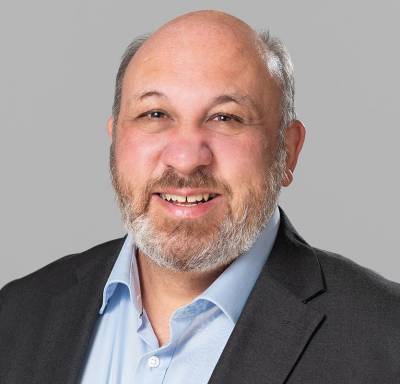Research Vision
Our Photonic Engineering research combines advanced materials, novel photonic device structures, electronic sensors, to form communicating systems running novel signal and image processing algorithms. Experimental and mathematical modelling research includes 3D imaging (holographic and Lidar), finding 3D positions, trajectories and motion patterns, 3D object recognition, real time training of neural networks, interferometry, acoustics.
Group Members
Academic Staff
Professor David Selviah
Dr David R. Selviah’s early research included design and fabrication of novel airfield landing lights, modelling fluid dynamic airflow over aircraft; control of antiproton accelerator; experimental particle physics data analysis; design, modelling, fabrication in clean rooms and characterization of novel surface acoustic wave, SAW, RF adaptive correlators, RF frequency filters, RF linear chirp pulse compression filters for pattern recognition and signal processing in pulse compression radar and secure communication systems; microlens clean room fabrication techniques; electrically tuneable focal length liquid crystal microlenses; electrically tuneable narrowband liquid crystal optical frequency filters; computer generated holographic optical elements; planar optical interconnect sub-systems; silicon microprism optical interconnect sub-systems; dense holographic storage techniques; high sensitivity coherent light detection techniques; backlights for liquid crystal displays, LCDs; pattern recognition; neural network analysis; real time optimization and neural network training on field programmable gate arrays, FPGAs.
View David's full profile.

Visiting Researchers
Dr Konstantinos Papatryfonos, Research Fellow, EU 3D MATRIX, Hybrid distributed Bragg Reflector silicon/GaAs quantum dot laser design and refractive index characterization. Industrial collaboration with IBM Zurich, Now at Mathematics Department, Massachusetts Institute of Technology, MIT, USA
Current PhD Students
Jiayu Pan, Automatic recognition of 1D and 3D features in 3D Lidar Point clouds. Industrial collaboration with Correvate.
Raushan Mussina, Computer Modelling of Wave Propagation through Optical Waveguides: the Galerkin Method Approach
Peter Thompson, Indoor and outdoor tracking using magnetic sensors. Collaboration with Department of Civil, Environmental & Geomatic Engineering and industrial collaboration with DSTL
Khalil Jibran Raja, Indoor tracking using Wifi RTT sensors. Collaboration with Department of Civil, Environmental & Geomatic Engineering
Previous PhD Students
Eleni Bohacek, PhD awarded, Accuracy of 3D images generated by multicamera photogrammetry for the ExoMars Rosalind Franklin Rover. Industrial collaboration with Airbus Defence and Space and Mullard Space Science Laboratory, MSSL.
Jifang Duan, PhD awarded, Automatic recognition of 3D objects in 3D indoor Lidar point clouds using Deep learning neural networks
Nafiseh Vahabi, PhD awarded, Determination of the opening status of flow valves and fluid flow velocity from acoustic optical fibre sensors down active oil, gas and water wells using deep learning neural networks. Arising from an Innovate UK collaboration with Silixa, Saudi Aramco, Chevron, Weatherford, Statoil.
Industrial Collaborators
- IBM Research, Switzerland
- Dust Photonics, Israel
- AMS, Austria
- Bright Photonics, Netherlands
- Airbus Defence and Space, Stevenage, UK
- Vercator, London, UK
- Silixa, UK
- Chevron, USA
- Aramco, Saudi Arabia
- Equinor, Norway
- NPL, UK
Academic Collaborators
- Fraunhofer IZM, Berlin, Germany
- Aristotelio Panepistimio Thessalonikis, Greece
- Universitat Politecnica de Valencia, Spain
- Queen Mary University of London
UCL Spinout Company and patents
UCL spin out company founded in 2017 providing Vercator® cloud platform data processing services for 3D point clouds. https://vercator.com/, A staff of 12 + 4 directors.
The Vercator platform uses scalable arrays of cloud processors to analyse 3D point cloud data. The fully automatic 3D point cloud services include
- 3D Visualisation, data and image sharing
- Storage
- Data Format Conversion
- Registration of overlapping 3D point clouds making use of novel patented technology
- Recognition and classification of 3D objects for indoor building structures, indoor residential building objects, highways, railways using deep learning neural networks. https://vercator.com/kb/segmentation-model-classes/
Vercator offers the first fully automatic cloud-based processing service for registration of 3D point clouds and for 3D object classification in 3D point cloud scenes. Services are protected by several international patents granted and several patent applications. The technology’s first market was the AEC sector (Architecture, Engineering and Construction) where professionals typically create a ‘digital twin’ of targets of interest, yielding improvements in their productivity. Vercator is now also commonly utilised in many market areas in addition to the AEC, including mining, infrastructure, real estate, film & TV, manufacturing and sports.
 Close
Close

